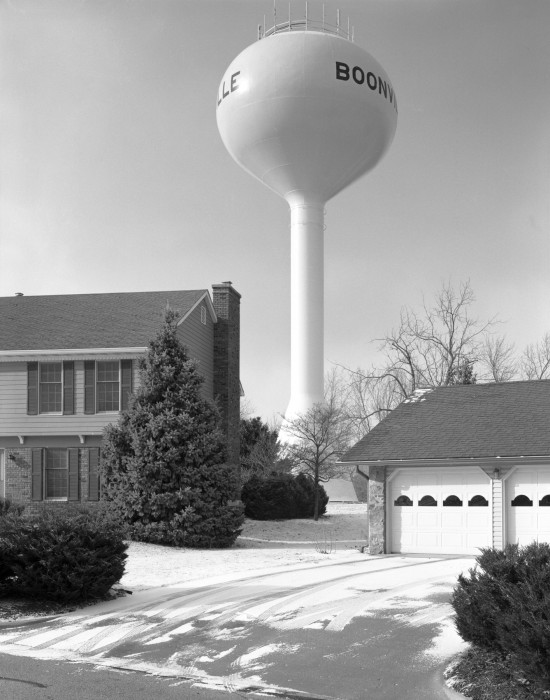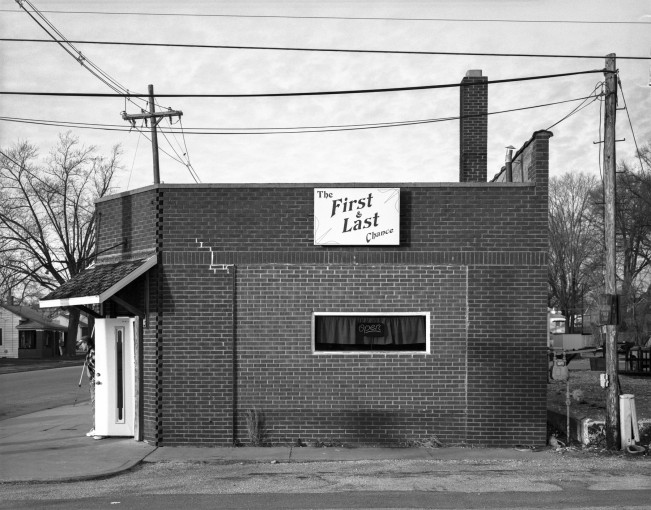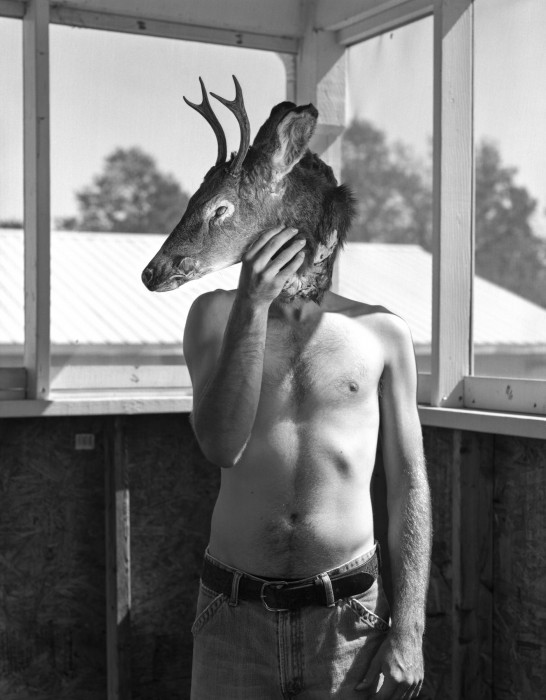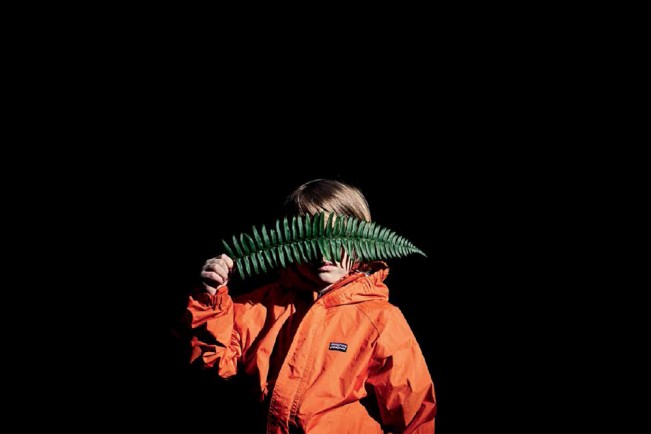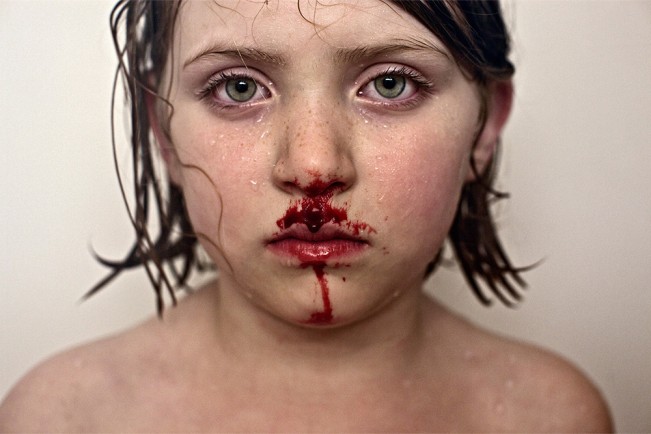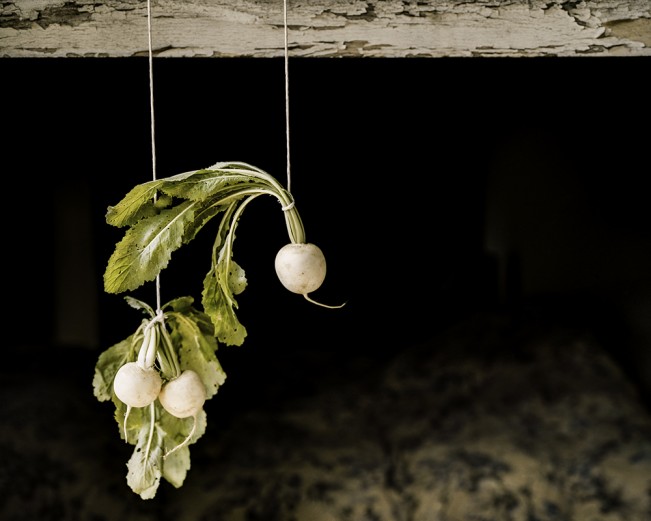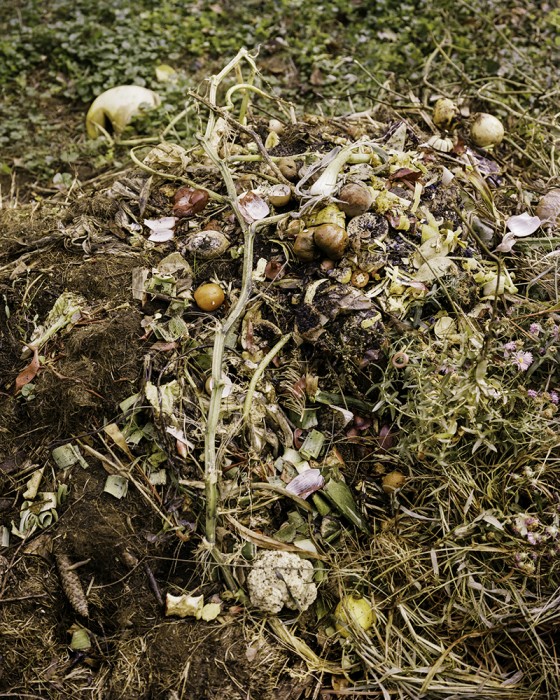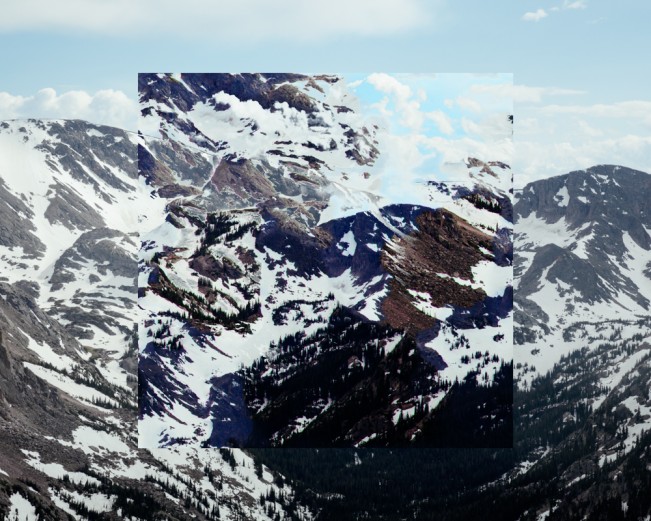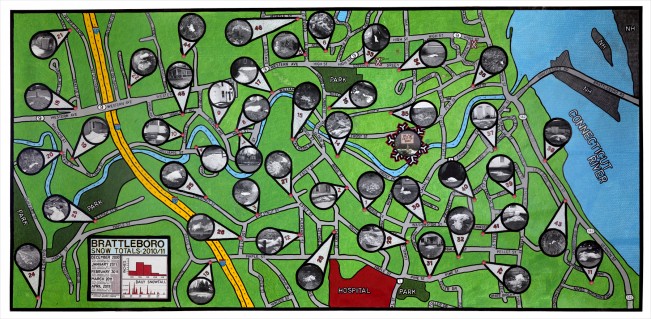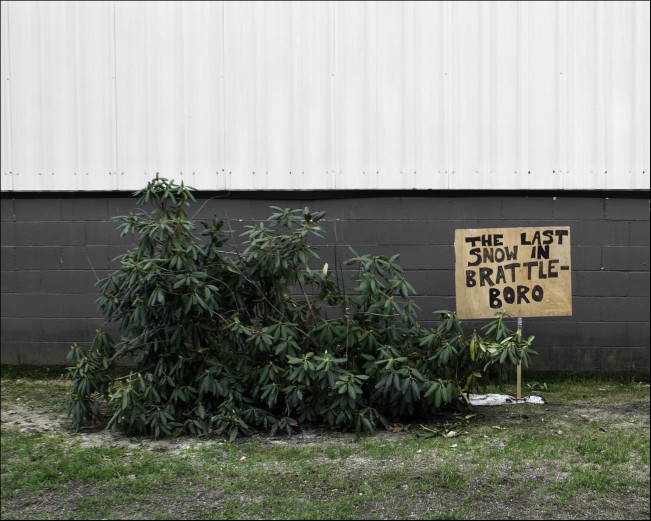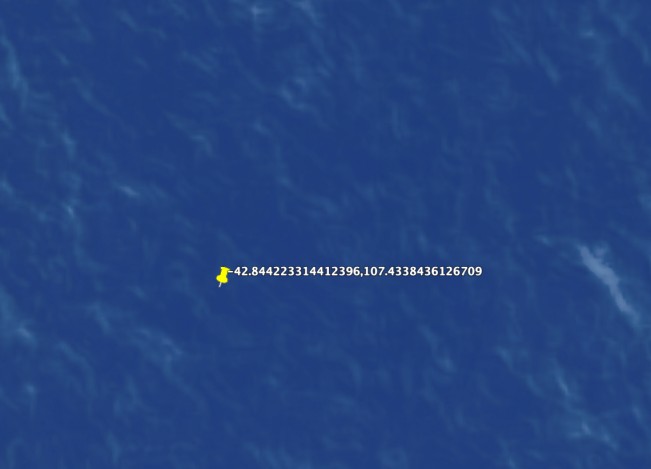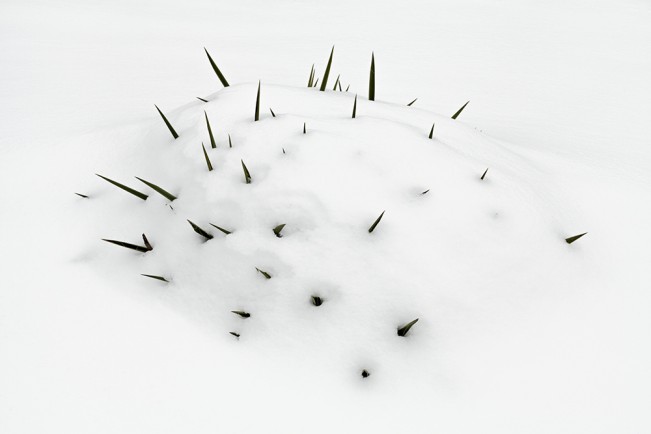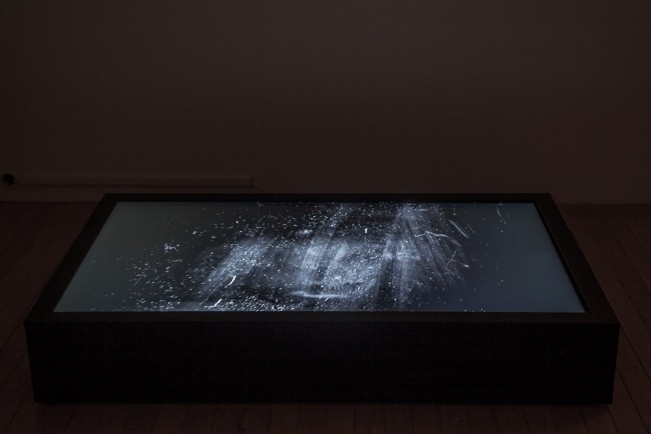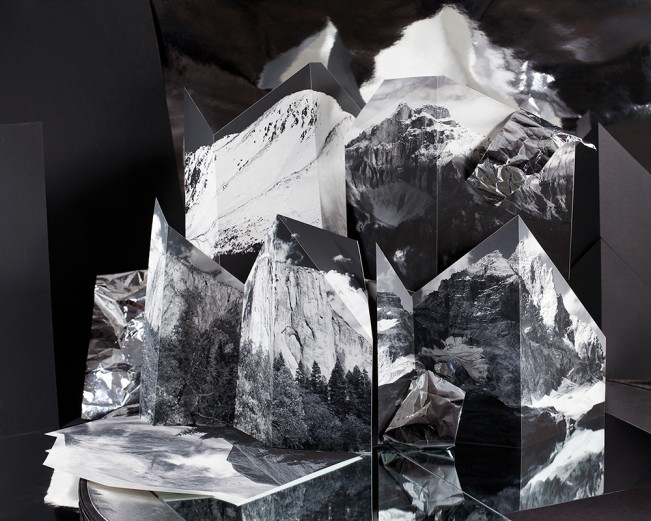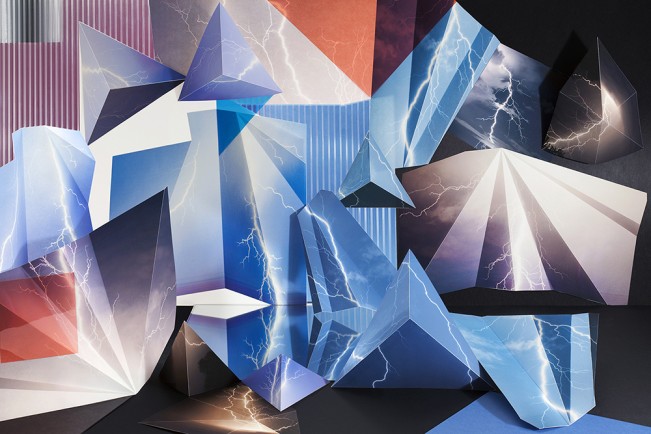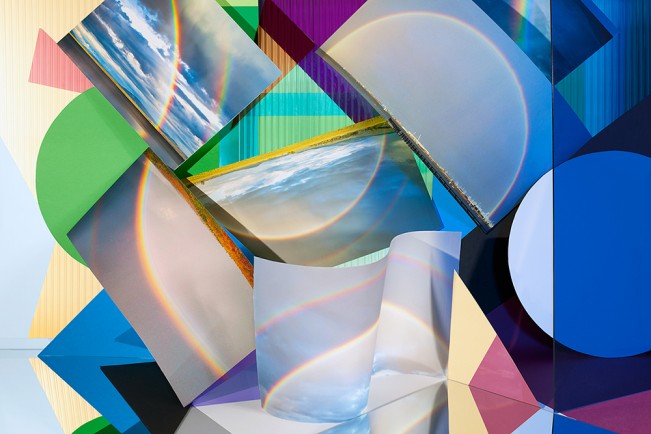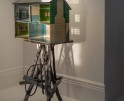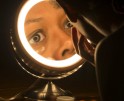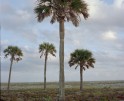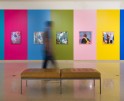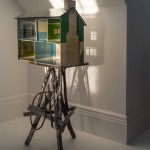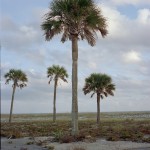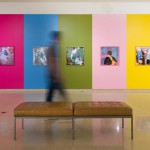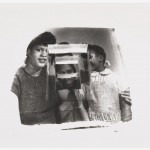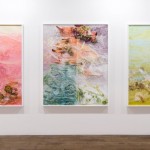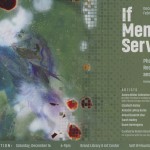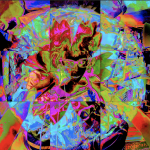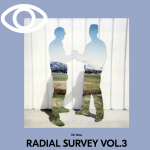Greer Muldowney: Landscape as Fetish
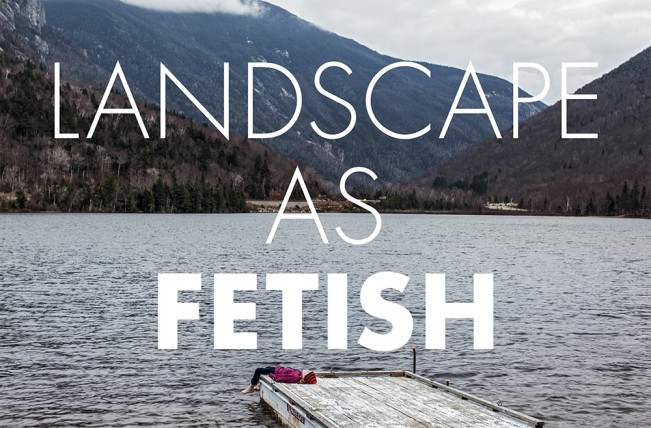 LANDSCAPE AS FETISH is a group exhibition, curated by Greer Muldowney that opens at the Gallery Kayafas in Boston on August 7th, running through August 29th, 2015. Artists Timothy Briner, Jesse Burke, Christine Collins, Mark Dorf, Jonathan Gitelson, Angela Mittiga, and Anastasia Samoylova are featured for their unique interpretation of the landscape.
LANDSCAPE AS FETISH is a group exhibition, curated by Greer Muldowney that opens at the Gallery Kayafas in Boston on August 7th, running through August 29th, 2015. Artists Timothy Briner, Jesse Burke, Christine Collins, Mark Dorf, Jonathan Gitelson, Angela Mittiga, and Anastasia Samoylova are featured for their unique interpretation of the landscape.
Muldowney writes of the exhibition: To fetishize is to mold an object of desire into an imagined state of perfection. When considering the landscape as fetish, the world is most often pictured as a bucolic masterpiece, a perfected and composed environment seeking out the sublime. However, there is no such landscape that ever achieves the perfection of the visual, as almost all lands have become commodified, designed and molded. Pictures of the scarred landscape are a new phenomena, but even these images construct the ideal of how the land was shaped for the better, or used for the betterment. The imagery in Landscape as Fetish is an ever-present reminder of our treatment and desire of the land.
For the purposes of this exhibition, the human quest to be part of an idealized ‘nature’ is explored as a conscious construct instead of the discovered pastoral. Artists have reinterpreted and regurgitated the landscape either as the object of their personal desire, or an effacement of our societal construct, or a place that only exists as a repository for reflection and mood. These image makers beg you to look at the landscape not as a reality, but as their vision and design through humor, beauty and the consciousness of the cliche.
Boonville brings together images from six iconographic American towns of the same name to present a single, unifying view of America. Having grown up in a quintessentially American small town myself, my memories and experiences informed the way I viewed and approached these places. By living in each of the six Boonvilles for approximately two months each, I was able to fully immerse myself in the life of each of these communities.
Whether in New York, Indiana or California, each Boonville possesses archetypal American qualities. And while each town has its unique character when presented as a whole, they embody a stark perspective of the typical American small town.
Timothy Briner (born 1981, Chesterton, Indiana, United States) is an American photographer living in Brooklyn, New York. Briner has exhibited across the United States and Europe. His first book, Briner Hauser was recently published by S_U_N. He works from his studio in Staten Island, New York.
Characteristic of Jesse Burke’s work are his installation grids- nebulous clouds of imagery that make a narrative of their own about the series Burke is working on. For Landscape as Fetish, several images from the series Wild & Precious are featured, highlighting the relationship between Burke and his oldest daughter Clover. Most of the images show the tension of the photographer’s desire to share the beauty and responsibility of the landscape to his child, only to be met with a telling look of a child’s apprehension, boredom and sometimes contempt for the parent. Other images show the breakthrough of learning and desire for the landscape that Burke seems to have desired to imbue all along.
Jesse Burke divides his time between personal art projects and commissioned work. A New England native, he currently lives in Rhode Island with his wife and their three daughters, Clover Lee, Poppy Dee, & Honey Bee. He received his MFA from Rhode Island School of Design, where he is a faculty member, and his BFA from the University or Arizona. Jesse’s work deals with themes related to vulnerability and identity, as well as human’s complicated relationship with nature. Daylight Books will publish his monograph, Wild & Precious, in October 2015. His work has been exhibited in galleries and museums in the U.S. and abroad including The Haggerty Museum, the Perth Center for Photography, the Tucson Museum of Art, the Print Center in Philadelphia and the Lishui Photo Festival in China and is held in many private and public collections including the Museum of Contemporary Photography Chicago, Museum of Fine Arts, Houston, the North Carolina Museum of Art, and the Rhode Island School of Design Museum.
Christine Collins has been making imagery that pertains to the “sustainable food movement” for some time. This is a recent catch phrase for a practice for our ages-long relationship to agriculture and has reinvigorated our relationship to the landscape. Local farms have become temples to this movement. These romanticized patches of land are the backdrops for our fantasies about a harmonious participation in the landscape. Vegetables procured from Community Supported Agriculture enjoy a privileged status and suggest a better life through a perceived connection to the sources of our food. We seek to make this halcyon vision congruent with the many hours most of us spend inside. Collins purposefully seeks to make images of this landscape as a concept to be defined.
From the Reclamation series featured in this exhibition, Collins photographed the same family’s compost pile over the span of many months. Located in the back corner of a well-tended yard, the pile is wild, sprawling, and ever changing. I am interested in how the physicality of the pile changes with the seasons and references both cycles of time and the desires of a family. A centuries’ old agrarian practice reminds us of who we want to be.
Christine Collins is an artist who lives and works in Boston, MA. She received a BA from Skidmore College and an MFA from Massachusetts College of Art and Design. Recent exhibitions include Forces At Work, University of Texas at Austin, Austin, TX, [Photo]gogues: New England, Flash Forward Festival, Boston, MA, The Easiest Season, Rayko Gallery, CA, Photography Biennial, The Danforth Museum, Framingham, MA, Mentor: 40 Photographers, 40 Years, Maine Center for Contemporary Art, ME, and The Keepers, The Foster Gallery, MA, among others. Her work has been featured in The New Yorker, The Boston Globe, Town and Country Magazine, Esquire Magazine, and Hawk & Handsaw: Journal of Creative Sustainability. She was recently a Critical Mass Finalist, nominated for the Prix Pictet, and selected as one of the Review Santa Fe 100. Collins is the recipient of a St. Botolph Club artist fellowship and upcoming exhibitions include You Can’t Get There From Here: The 2015 Portland Museum of Art Biennial, curated by Alison Ferris. Her work is represented by Jen Bekman Gallery, New York, NY. She has been on the summer faculty of the Maine Media Workshops in Rockport, ME since 2003 and this summer will be teaching at Anderson Ranch Arts Center in Snowmass Village, CO. She was an adjunct professor at Massachusetts College of Art and Design and has taught at Lesley University College of Art and Design since 2004, where she is currently an Assistant Professor and Chair of BFA Photography.
Mark Dorf has been entranced with how the world is organized and influenced by digitization. His work seemed more than natural to feature in this show, with his ever-growing exploration of how we constantly seek to digitize, distort and organize the landscape for our use or even piece of mine. The work featured from //_PATH are a small sampling of how Dorf has continued to explore humanity’s ‘mastery’ and misunderstanding of the visualized land.
//_PATH explores these ideas through digital photography, collage, 3D rendering, and primitive 3D scanning technology. Within the images, I focus on using strict geometric and synthetic form to contrast against the landscape in which they are manifested; a comparison of language. The natural landscape can be seen as the most ancient of symbolic languages: it is the original set of symbols that birthed all of modern language; it is the original text. Focusing on the landscape and our modern digital language, I seek to understand our aggressive capture and digitization of our surroundings through very basic use of pure color and the native tools of contemporary digital imaging that we use to create meaning and manipulation in mass media.
Mark Dorf grew up in Louisville, Kentucky and graduated from The Savannah College of Art and Design with a B.F.A in Photography and Sculpture. Employing a mix of photography and digital media, Dorf’s work explores the post analogue experience – society’s interactions with the digital world and its relationship to our natural origins. Dorf scrutinizes the influence of the information age, and explores his theme through a combination of photography and digital media, examining in his most recent works how we encounter, translate, and understand our surroundings through the filter of science, math and technology. Mark seeks to understand our curious habitation of the 21st-century world through the juxtaposition of nature and the digital domain.
Dorf has exhibited internationally including at Postmasters Gallery, New York, 2015 (upcoming); Outlet Gallery, Brooklyn, 2015; The Lima Museum of Contemporary Art, Lima, 2014; Mobile World Centre, Barcelona, 2014; Harbor Gallery, New York, 2014; SCAD Museum of Art, Savannah, 2013; and Phoenix Gallery, New York, 2012. Dorf’s work is included in the Savannah College of Art and Design permanent collection.
The exhibition is not exclusively photography, including mixed media and video installations from Jonathan Gitelson and Angela Mittiga. Gitelson’s two pieces show a playful consciousness of how we choose to ignore or romanticize the quarks in our environment.
In Gitelson’s video installation Antipode, a screen resides showing the coordinates for the exact opposite point on the globe from which he and his family live. Everyone has an Antiopode, but Gitelson’s quest to go there is a feat in contemporary exploration fantasy and failure, as the real installation, beyond the isolated coordinates, are the correspondence and rejections from those who have refused to take Gitelson to this singular point on the opposite side of the world.
Gitelson’s second piece is the Last Snow in Brattleboro, a large, mixed-media map made in response to the winter of 2010-2011, which was one of the worst winters in the history of Brattleboro, Vermont, with an astonishing total of 161.5 inches of snow. As April neared its end, there were still piles of snow on the ground all over town.
Gitelson writes: I began to feel that I couldn’t properly enjoy the budding spring weather until I was sure that the snow was really and truly gone. I began driving the streets of town, photographing all the piles of snow I could find. I tracked the snow piles over the next weeks until I had documented the demise of each one.
The last mound of snow to go was on Frost Street, appropriately enough. When all the other piles had melted, I planted a sign reading “The Last Snow In Brattleboro” at the Frost Street pile, and left it there to alert others that the end of our epic winter was finally at hand. I returned each day t!o monitor the snow pile until it disappeared for good.
Jonathan Gitelson [1975] is originally from Mount Kisco, NY and currently resides in Brattleboro, Vermont. He is an Associate Professor of Art at Keene State College in NH and works in a variety of mediums that include photography, artist books, video, installation, web-based projects, and public art. Jonathan’s work has been exhibited at institutions throughout the United States, Canada, and Europe with highlights being MASS MoCA, the deCordova Museum and Sculpture Park, the Scottsdale Museum of Contemporary Art, the Milwaukee Art Museum and Galerie f5,6 in Munich. His artwork is in the permanent collection of numerous institutions that include The Museum of Contemporary Photography, The Museum of Fine Arts Houston, The Museum of Fine Arts Boston, The Whitney Museum of American Art, The Museum of Modern Art New York and The Victoria and Albert Museum in London. He is the recipient of the College Art Association’s Geraldine R. Dodge Foundation Fellowship, the Puffin Foundation Fellowship, the Vermont Arts Council Artist Development Grant and the City of Chicago Community Arts Assistance Program
For Landscape as Fetish, Mittiga has both video and photography as part of the exhibition.
Mittiga says of her work: Many of my strongest memories are of the winter landscape of upstate New York. These open and aching environments defined my understanding of home and now influence me as I make images today. For me, these memories primarily reside in the in-between places that shake my emotional grounding and intellectual footing. To this end, I search the landscapes of today for the traces, markings, and structures that evoke feelings of transience and a state of drifting into the past. My impulse to engage with and transform the memory of place through image making has been guided by the quiet observations and familiarity that I have felt while exploring sites throughout the Northeast.
Angela Mittiga was born in New York and educated in Boston, earning a BFA from the Art Institute of Boston at Lesley University, an Ed.M from Harvard University, and a MFA from the Massachusetts College of Art + Design. Selected as a 2015 Review Santa Fe participant, her photographs and videos have been shown nationally and are currently on view at the Danforth Museum of Art. Upcoming shows include Landscape as Fetish at Gallery Kayafas, Boston and Field Study at David Weinberg Photography, in conjunction with the Filter Photo Festival, Chicago.
Angela teaches courses in photography at art colleges throughout Boston and is currently the Teaching Artist in Photography for the Teen New Media Program at the Institute of Contemporary Art/Boston.
Several of Anastasia Samoylova’s Landscape Sublime pieces are featured in this exhibition. Samoylova’s overstimulating constructions remind us how the landscape is an object to be consumed more than anything else.
The work explores the ways in which photography is used to illustrate concepts of the Beautiful and the Natural in contemporary visual culture. Samoylova’s practice examines photographic typologies of natural and human-intervened landscapes culled from advertising and public domain image libraries online. Her research focuses on widely circulated nature themed images that depict such cultural constructs as Nature, Environment, and Beauty as related to the environment, the concepts that ultimately illustrate our worldview. From a compositional perspective, the work is an interplay between well-established pictorial genres such as Landscape and Still Life.
Anastasia Samoylova is an artist and educator based in upstate New York. Her work investigates the medium of photography in the context of contemporary visual culture. Her work has been exhibited nationally and internationally and included in the collection at the Museum of Contemporary Photography in Chicago and ArtSlant Prize collection in Paris. Samoylova was selected as a winner of the 2015 Magenta Foundation Flash Forward Competition. She is currently serving as assistant professor of art at Bard College at Simon’s Rock.
Greer Muldowney is an artist, photography professor and independent curator based in Boston,Massachusetts. She received an undergraduate degree in Political Science and Studio Art from Clark University, and an MFA from the Savannah College of Art and Design. She has acted as the Curator of the Desotorow Gallery in Savannah, GA and is the Regional Coordinator for the Flash Forward Festival on behalf of the Magenta Foundation. Muldowney also serves as an active member of the Board of the Griffin Museum of Photography, and currently teaches at Boston College and Boston University.
Her work has been exhibited and published Nationally and Internationally. She is also the recipient of the 2013 Massachusetts Cultural Council Fellowship and a PDN 30 Photographer to watch for 2014.
Posts on Lenscratch may not be reproduced without the permission of the Lenscratch staff and the photographer.
Recommended
-
Broad Strokes III: Joan Haseltine: The Girl Who Escaped and Other StoriesMarch 9th, 2024
-
Pamela Landau Connolly: Wishmaker and The Landau GalleryFebruary 27th, 2024
-
Janna Ireland: True Story IndexFebruary 17th, 2024
-
Richard McCabe: PerdidoJanuary 7th, 2024
-
Aline Smithson: The Ephemeral ArchiveJanuary 5th, 2024

